Metal identification is crucial before welding because you must select the appropriate welding process, filler metal, and welding parameters.
You should be able to identify metals by their look, spark test, and other manual testing methods we’ll discuss soon.
At the bare minimum, a welder must recognize most commonly welded metals like mild steel, stainless steels, aluminum, titanium, and a few others.
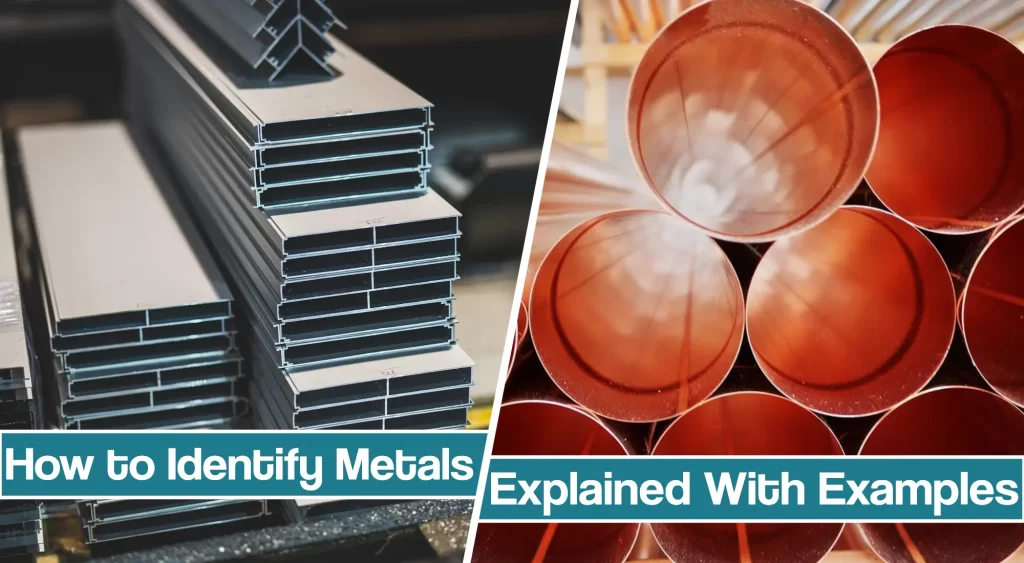
In this article, you will learn proper metal identification methods. It’s relatively simple once you get the just of it. So, let’s get started.
Metal Categories – Ferrous Metals and Nonferrous Metal Composition
All metals are classified as ferrous metals and non-ferrous metals at the most basic level.
- Ferrous metal contains iron. Some examples are carbon steel, cast iron, high-strength steel, gray cast iron, white iron, malleable cast iron, wrought iron, and numerous alloy steels.
- Non-ferrous metal doesn’t contain iron at all. Commonly welded examples are titanium alloys, copper, aluminum, magnesium, lead, and nickel.
While not a classification, alloys are particularly important for welding. An alloy is a new metal formed by mixing two or more metals and sometimes even other elements.
Iron is the most basic component of commonly welded metal like various steels. If the carbon content is below 0.3% we call such steel a low-carbon or mild-steel, and this is the most common metal in the fabrication industry.
However, alloy steels are a modified version of low, medium, or high carbon steel with the addition of manganese, phosphorous, nickel, tungsten, chromium, sulfur, niobium, titanium, or other elements. Alloy steels have improved certain mechanical properties, making them more suitable for certain jobs.
Traditional Metal Identification Methods
Since most individuals and welding shops don’t have expensive equipment to perform optical emission spectrometry, x-ray diffraction, or other modern metal testing methods, we will stick with the basics.
There are a few ways for metal identification you can perform almost anywhere, and they work very well. Those are spark testing, appearance test, magnet test, and hardness tests (this does require an impression machine).
Visual Inspection
Inspecting for color, scratch marks, chipped parts, and broken edges are the first place to start.
While we can’t conclude much from the color test, we can start classifying the metal.
- Redish color – most likely copper
- Gray, dark gray, black – most likely some kind of ferrous metal
- Shiny gray, white – most likely some type of stainless steel, titanium, or aluminum
- Gold – most likely brass or bronze
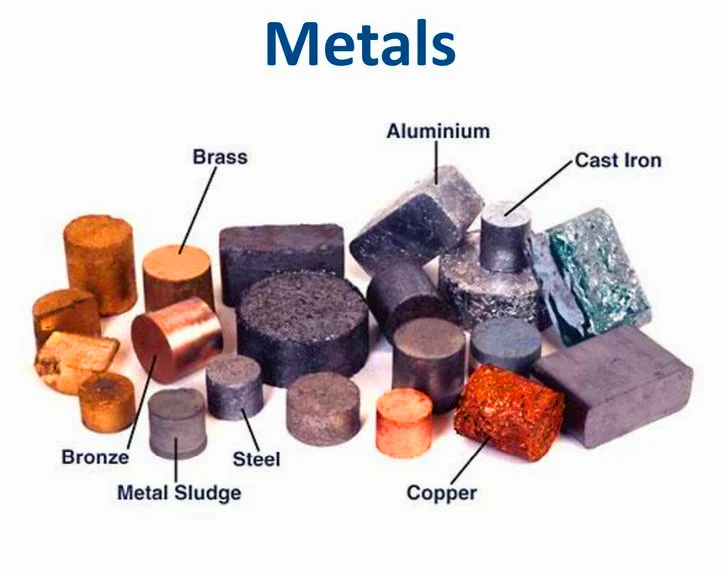
Further, we need to examine the scratches, chipped parts, and broken edges. If we can see the inner metal’s texture, that can help us identify different metal alloys.
| Metal | Color | Color and structure | |
|---|---|---|---|
| Unfinished, undamaged surface | Freshly ground or filed surface | Freshly fractured surface | |
| Low carbon steel like mild steel | Dark gray | Bright silvery gray | Soft, bright gray |
| High-carbon steel | Dark gray | Bright silvery gray | Light gray |
| Stainless steel | Light silvery gray | Bright silvery gray | Medium gray |
| Cast iron, gray | Dull gray | Silvery gray | Crystalline structure, dark gray |
| Cast iron, white | Dull gray | Silvery white | Crystalline structure, silvery white |
| Malleable iron | Dull gray | Light silvery gray | Fine crystalline structure, dark gray |
| Wrought iron | Light gray | Light silvery gray | Bright gray |
| Lead | Dark gray | White, silvery, with a hint of blue | Crystalline structure, light gray |
| Nickel | Lustrous, silvery white | Bright silvery white | Off-white |
| Monel metals | Dark gray | Light gray | Light gray |
| Aluminum | Light gray | White | Fine crystalline structure, white |
| Copper | Reddish, brown, and green if oxidized | Bright reddish | Bright red |
| Bronze and Brass | Reddish-yellow, gold-like, or brownish | Reddish-yellow to yellow-white | Red to yellow |
Spark Test Metal Identification
The most efficient way to achieve metal identification with limited resources is to perform a simple spark test. Take the metal and grind the metal surface using an angle grinder for two to three seconds.
As you become a more experienced metal worker, you’ll be able to identify almost all metals just by the visual spark testing technique. However, your angle grinder does need at least 4500 RPM and a relatively new grinding wheel with a coarse grit size.
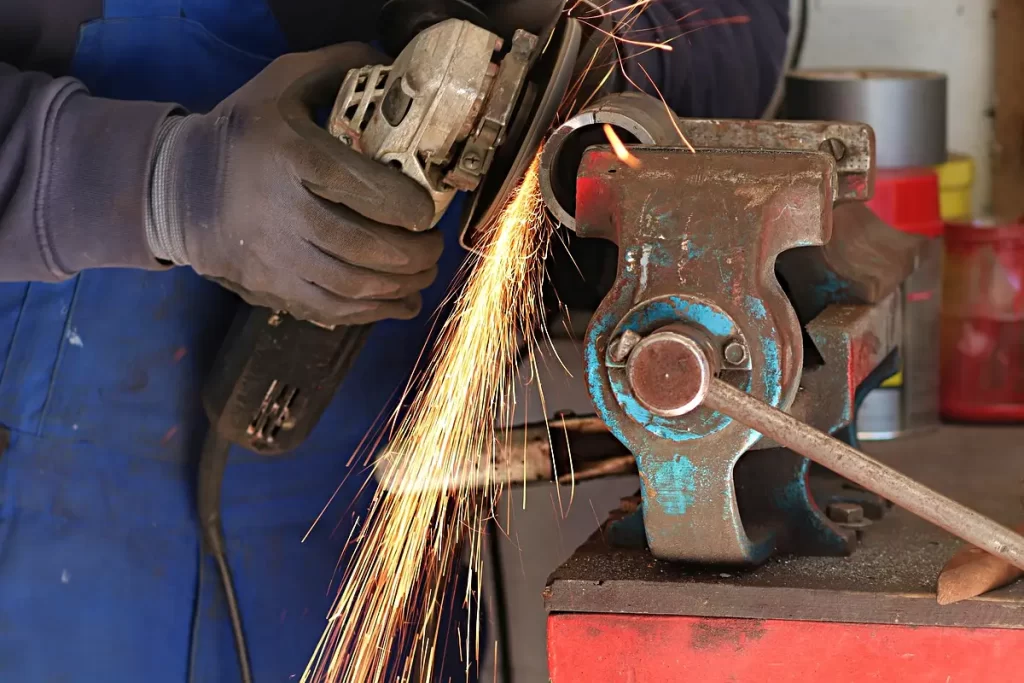
Ferrous metal like irons and steels produce orange to red sparks with distinctive patterns that an experienced eye can quickly identify.
Some metal doesn’t produce sparks at all. For example, aluminum won’t create sparks when ground. Combining this test with a visual inspection may help you identify if the part is aluminum. Just be careful when grinding aluminum with a regular grinding wheel. It can break because aluminum requires specialized grinding wheels that won’t load up with fine aluminum particles.
Magnet Test
Generally, iron and iron-containing metals like low carbon steel are magnetic, while nonferrous metals don’t respond to magnets. However, this is not always the case. Some stainless steels are non-magnetic too. For example, the austenitic stainless steel contains nickel, taking away magnetic properties. However, if these steels are cold worked, they could become magnetic again.
While there are many variables to consider, magnet testing is a helpful addition to other tests described above.
Hardness Test
A few hardness testing methods are used for metal identification but let’s stick to the two most popular:
- The Rockwell method requires a Rockwell hardness testing machine that measures the depth of indentation made by the machine’s cone-shaped point.
- The Brinell hardness test requires a similar machine, unsurprisingly called the Brinell hardness testing machine. However, unlike the Rockwell test, the Brinell hardness test measures the area of a hardened ball’s impression into the metal under a 3,000kg load. If the impressed area is large, it means that the metal is softer and belongs to soft metals, but if the indentation is slight, it belongs to hard metals.
| Material | Brinell hardness number |
|---|---|
| Lead | 5.0 |
| Pure aluminum | 15 |
| Copper | 35 |
| Soft brass | 60 |
| Hardened aluminum | 75 |
| Mild steel | 130 |
| Annealed chisel steel | 235 |
| White cast iron | 415 |
| Nitrated surface | 750 |
| Glass | 1550 |
| Rhenium diboride | 4600 |
Identifying Common Metals
Let’s stop talking abstractly and apply the common metal identification methods to typical metals welders, and other metal workers need to identify daily.
Carbon Steel
It’s relatively easy to identify low-carbon steel, but beginners may have some trouble with it. This is a prevalent metal used almost everywhere, and it’s the most commonly welded material thanks to its excellent mechanical properties.
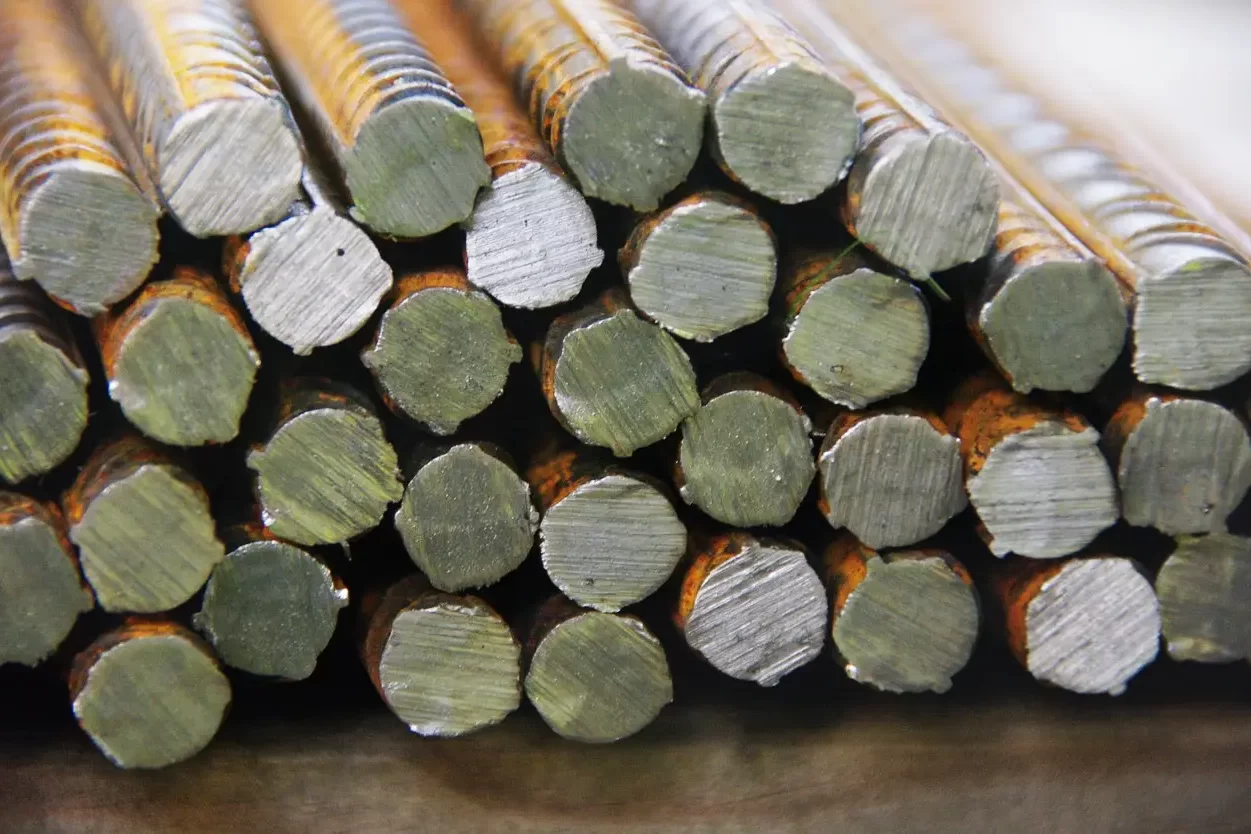
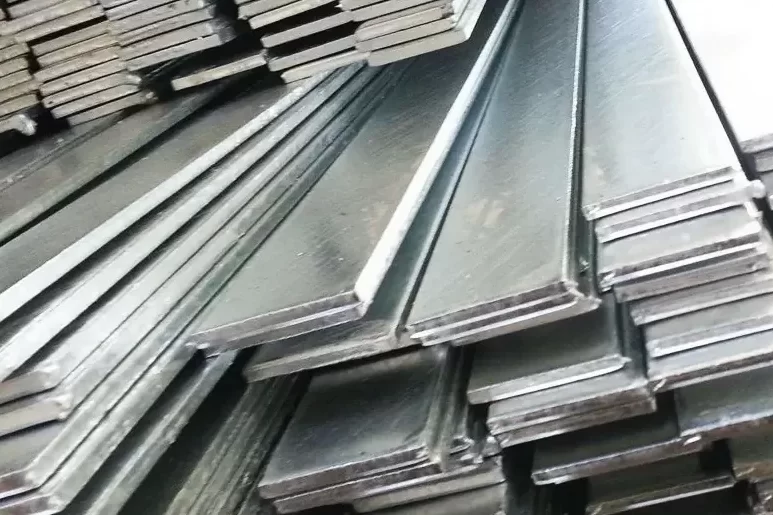
Carbon steel is made by melting iron ore and adding carbon to it to create different grades of carbon steel.
- Low carbon steel, or mild steel, is used in almost all industries. It is ductile, malleable, relatively strong, easy to weld, and inexpensive. The carbon content is approximately 0.05–0.30%.
- Medium carbon steel balances ductility and strength. It is often used in the automotive industry, and for large parts, thanks to its good wear resistance. The carbon content is approximately 0.3–0.5%.
- High carbon steel is very strong but brittle, so it is difficult to weld without adequate post welding heat treatment. It is used for springs, specialized parts, tools, etc. The carbon ranges from 0.6% to 2%.
- Cast iron has a carbon percentage above 2% and is not technically steel. It is a very brittle material but extremely strong. Still, due to very poor ductility, it can’t be welded without particular precaution and experience.
All carbon steels are magnetic, rust quickly, heavy and dense, and have a relatively uniform dark, dull color. But, when ground, you will see a shiny metallic surface appearance.
Carbon steel responds well to a spark test:
- Low carbon steel creates a long stream of sparks with a “finger burst” pattern.
- Medium to high carbon steel has a shorter stream of sparks with a more pronounced burst pattern. The sparks flare up at a wider angle as they go off the grinding point.
- Cast iron creates the shortest stream of sparks, and the sparks don’t explode as much. They are narrower, and sometimes there are very few sparks coming off.
Stainless Steel
Stainless steel is carbon steel but with a minimum of 10% chromium which prevents corrosion and gives it its silvery shiny look. However, not every stainless steel is the same. There are tens of different grades, so if welding stainless steel, ensure you know exactly what type you are working with; it’s a very sensitive metal.
There are four different stainless steel categories, and it’s impossible to tell them apart visually. But, the magnet testing is helpful to determine if your stainless steel part is austenitic. If it’s magnetic, the piece is likely ferritic or martensitic stainless steel.
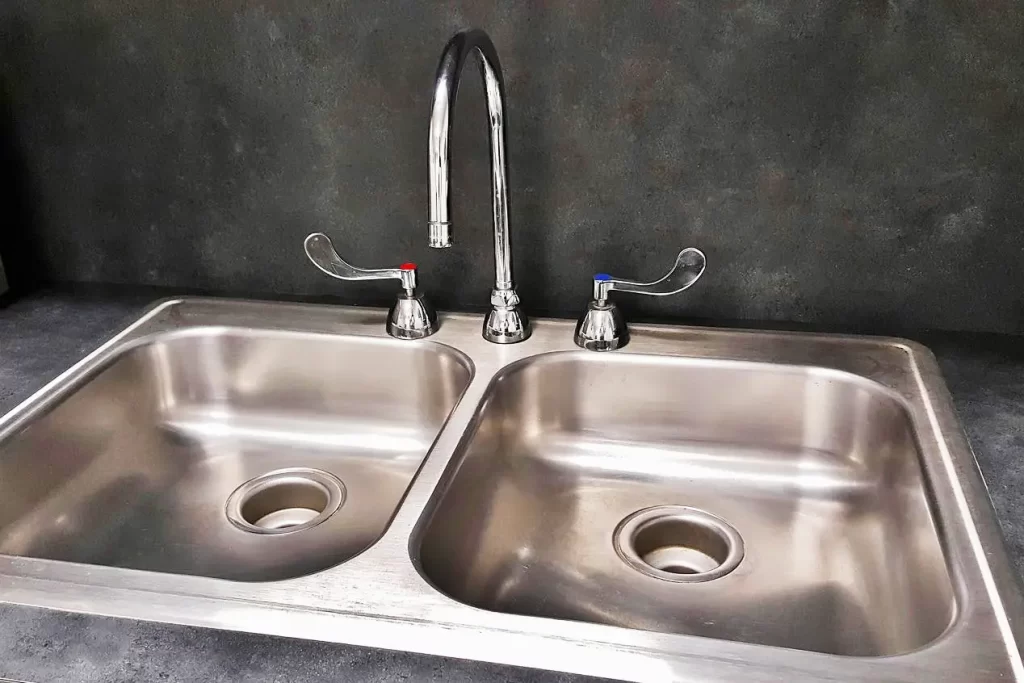
- Ferritic stainless steel contains a minimal amount of carbon. It’s soft, ductile, and has limited corrosion resistance. So, if you doubt that the corroded steel you have is stainless, it is possible with ferritic type. It is magnetic, so that can add to verification.
- Martensitic stainless steel has exceptionally high strength, poor ductility, and low fracture resistance. You can try to bend it, and if it breaks, that can be a sign that your SS is martensitic. It is often used for cutlery, aerospace applications, and medical devices.
- Austenitic stainless steel is non-magnetic, have superior corrosion resistance, and is the most commonly used stainless steel. These are your typical 300 and 400 SS grades.
- Duplex stainless steel is a bland of three alloys: molybdenum, nickel, and chromium. It’s tougher than ferritic SS and has a better stress corrosion cracking resistance than austenitic SS.
To learn how to weld stainless steel, refer to our separate article where we covered it in detail. Additionally, you should understand how different mechanical treatment affects the finishing surface of stainless steel.
Galvanized Steel
Galvanized steel is zinc-coated steel. This coating provides corrosion protection and gives it a unique, consistent shiny gray color making this metal identification fairly simple.
You should never weld galvanized steel without adequate protection like PAPR systems. Additionally, you must use proper welding fume extraction systems or have sufficient ventilation. Welding galvanized steel releases extremely hazardous fumes that lead to poisoning and severe symptoms.
So, it is necessary to first remove the zinc coating by grinding it off. The produced dust contains zinc and should not be inhaled. It is best to grind the zinc coating outside while wearing adequate respiratory protection.
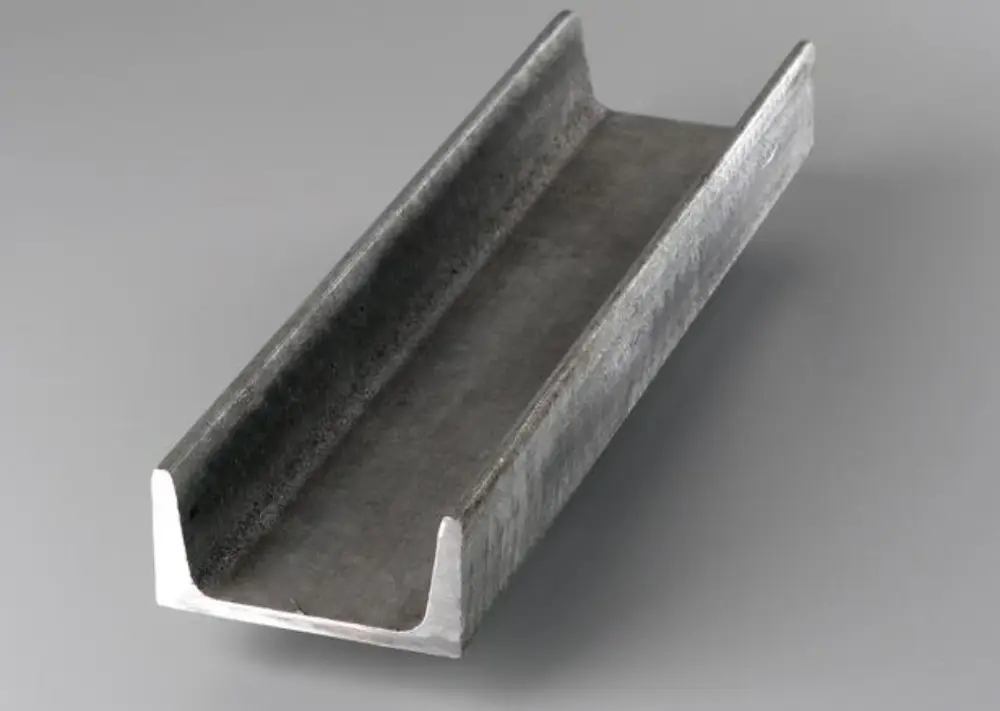
There aren’t any easy methods to test if the steel you have is galvanized or painted. So, if you are unsure, you should take every precaution before welding it.
Aluminum
An inexperienced welder may mistake aluminum for stainless steel. But it’s easy to exclude SS as an option.
Aluminum is very light, doesn’t make any sparks when ground with an angle grinder, it’s not ferrous, so it’s non-magnetic, it doesn’t rust, but it does create a dull oxide layer, and underneath it is a very shiny silvery aluminum.
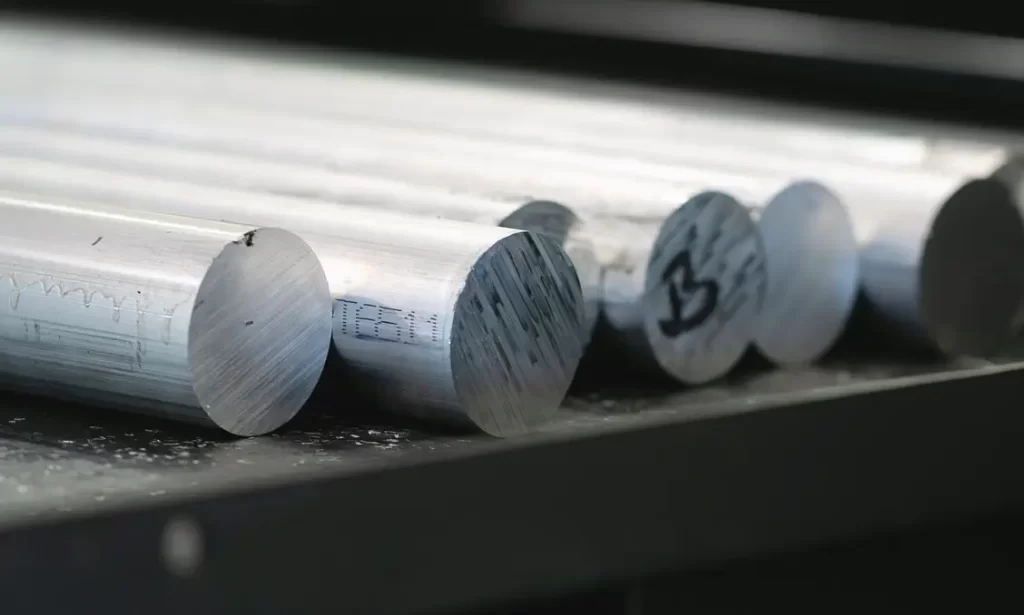
Aluminum is soft, ductile, malleable, and relatively strong. So, it’s often used in industries where strength is required, but the low weight is paramount, like aerospace and automotive industries. If you wish to learn more about welding aluminum read our full guide.
Titanium
Titanium is easy to mistake for aluminum because it’s lightweight and has a similar silver color. It has an incredible strength-to-weight ratio, but it’s not often used due to its high cost. Plus, welding titanium is challenging, so its application is limited.
However, it is often used in the petrochemical industry or when maximum strength is required for pressure tanks and vessels. It is also found in high-end vehicles (especially motorcycles) and the aerospace and medical industry. It’s a non-toxic metal, so replacement hips and medical screws are often made out of titanium.
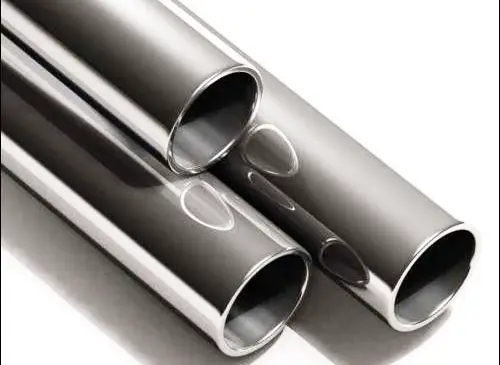
Unlike aluminum, titanium does create sparks when using a grinding wheel on its surface. But unlike carbon steel, its sparks are much more yellow and sometimes almost white. You can immediately tell there is a massive difference in spark test color, which is a dead giveaway that the metal may be titanium. If it’s not magnetic, has a whiteish spark stream, its lightweight, then it’s not stainless, carbon steel, or aluminum, leaving only one option—titanium.
Copper
Copper is relatively easy to identify visually. Its characteristic red color is easy to tell. Plus, it’s a non-magnetic metal. So, if you come across a painted copper metal, performing a magnet test may be your first step.
Once you conclude that it’s not a ferrous material, you can grind some paint off and scratch into its surface.
As soon as you see the red copper color, there isn’t much more to it.
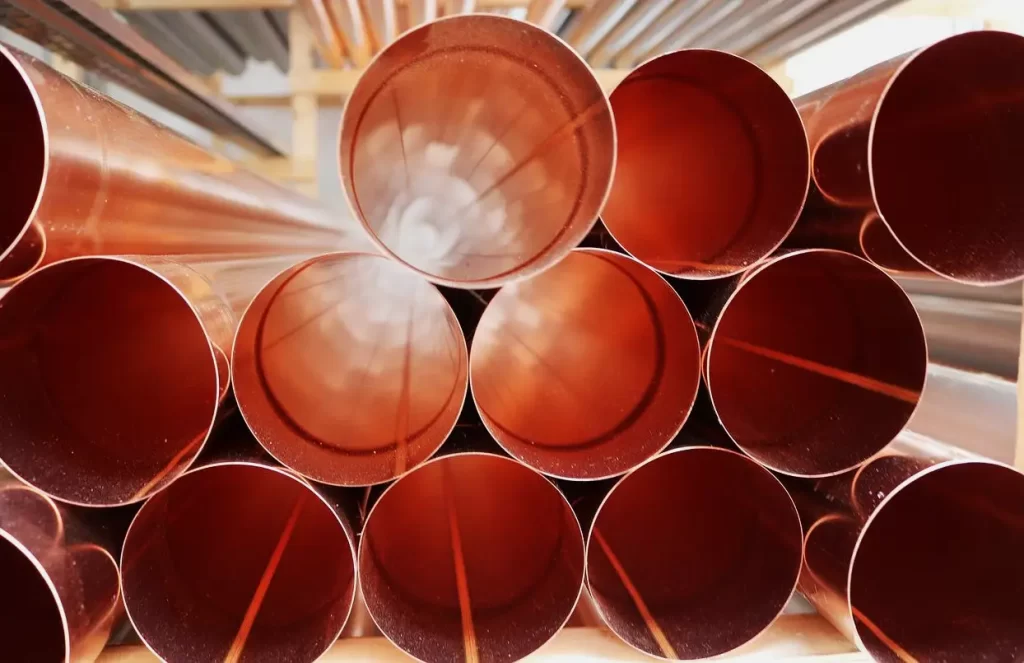
Brass
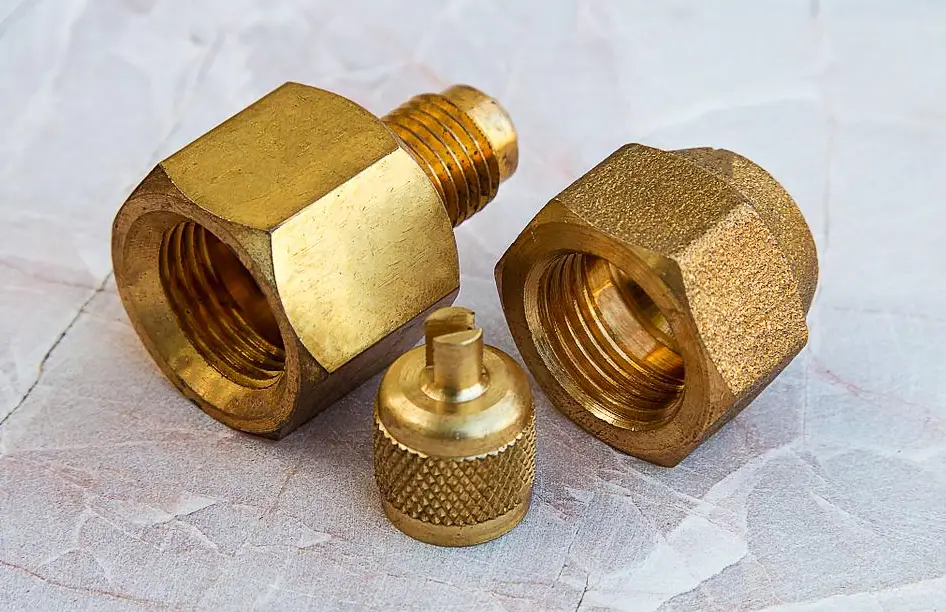
Brass has a distinct shiny gold color, but in time it becomes slightly dull as oil and grease build upon it. Valves, fittings, and inlets are made of brass thanks to its excellent fit properties and its resistance to static electricity and sparks. Brass is an alloy of copper and zinc, and it’s a softer metal than bronze.
Bronze
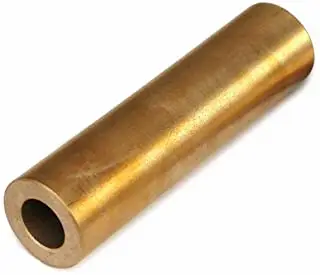
Bronze is an alloy of copper and tin. Sometimes it’s challenging to tell bronze from brass. But, bronze has a slightly more reddish color while brass is much more gold-like. This is a soft metal often used in interior decoration, but it’s also possible to find it in the marine industry. For example, ship propellers and fittings may be made of bronze.
Lead
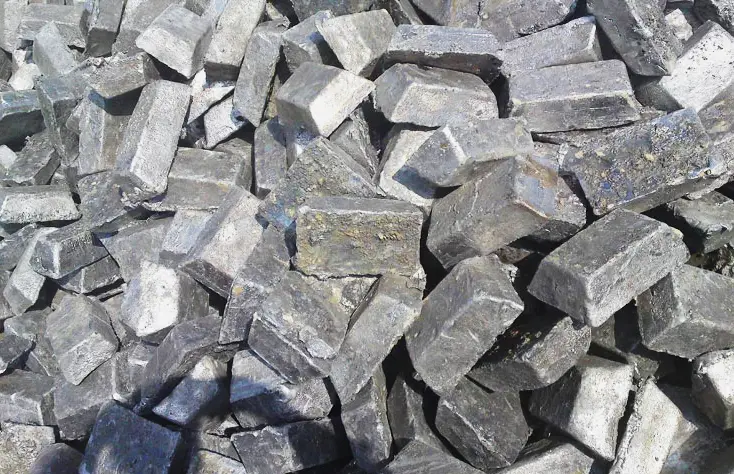
Lead is a very toxic metal, and welding lead requires honoring all safety measures. To learn how to weld lead, read our full article on the topic. Lead has a dark gray, almost black color, and it’s an extraordinarily dense and soft, malleable metal. It is often used in the medical field as protection against X-rays and other radiation forms.
Conclusion
It’s often difficult to tell metals apart unless you take many metal properties into consideration, which is the best way of metal identification. Unless you are looking at copper, it takes analyzing various metal characteristics like appearance test, weight, shine, observing the spark stream, and magnet behavior.
So, don’t just rely on one aspect to identify the metal. As you gain more experience, metal identification will become second nature, especially with common metals like carbon steel, stainless, and aluminum. But, there are also modern metal identification methods like laser induced breakdown spectrometer and unlike popular traditional testing methods, we discussed here, modern metal testing methods are far more conclusive.
Resources:
- Introduction to types and identification of metals by westada.org
- How To Identify Metals by Federalmetals
- Metals and How To Weld Them by Theodore Brewster Jefferson, Gorham Woods
- Why is stainless steel non-magnetic by meadmetals.com
- How to Tell if Steel Has Been Galvanized by universalgalvanizing.com
- Ferritic vs. Martensitic vs. Austenitic by www.aatprod.com





